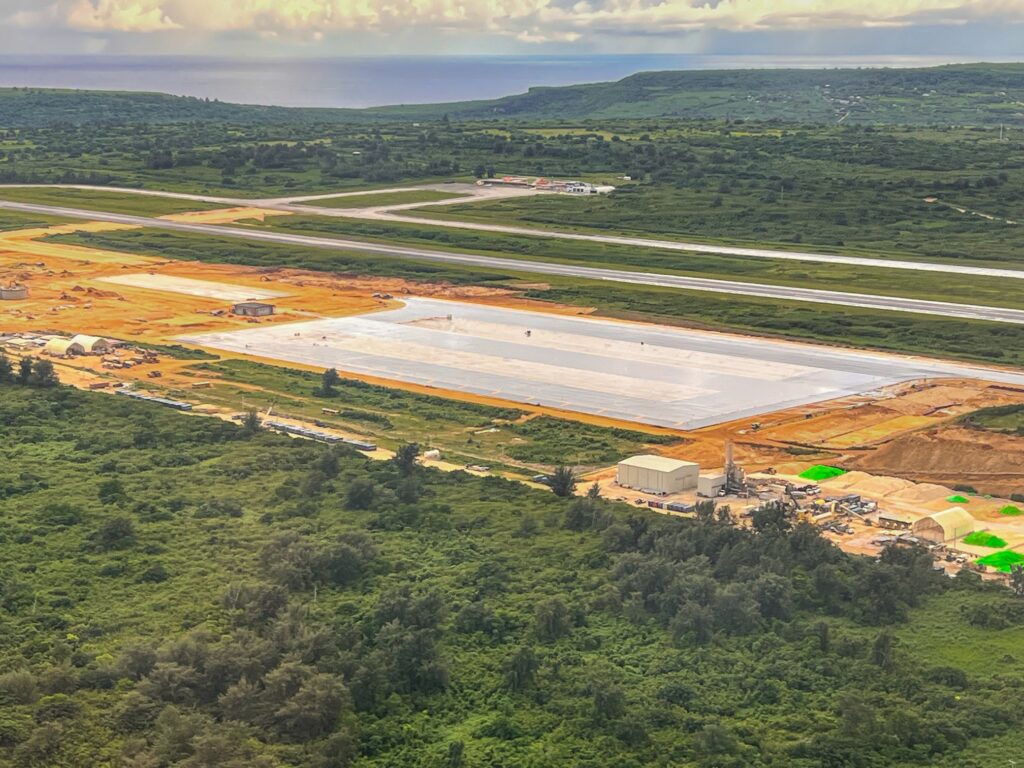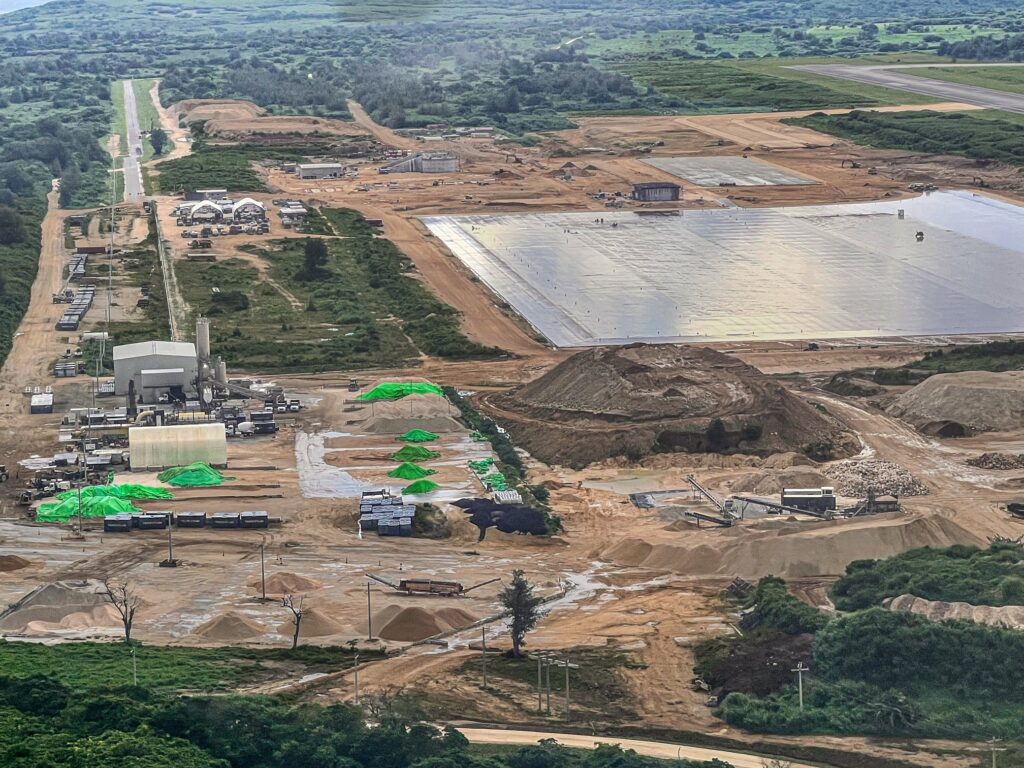


(Above Tinian) – From aboard Star Mariana Air’s brief commercial flight on a Piper Cherokee, the enormity of America’s alternate airfield and logistics node on Tinian comes into a sharp focus. About 125 miles north of Andersen Air Force Base, Guam, this colossal development is a first for the small Northern Mariana Islands municipality.
This undertaking is remarking the landscape at an unprecedented pace.
From the air, the construction paints a dramatic streak of brown against the lush green below. In the distance, the separate, half-a-billion-dollar North Field rehabilitation project stands out. Launched in 2024 and slated for completion in 2027, it targets two of four runways ready by that date.
But the centerpiece is the Tinian Divert Airfield, which dwarfs even the main runway of Tinian International Airport situated next to it. The new airfield is designed to significantly expand U.S. military capacity for training, disaster response, and operational support. Officials describe it as a crucial addition—offering more options to sustain training, ramp up humanitarian efforts, and guarantee readiness if access to Andersen Air Force Base or other Western Pacific installations is compromised.
Tinian’s role in military history is unmistakable. The island once served as a vital World War II base and was the Manhattan Project’s launching point for the Hiroshima and Nagasaki missions. Over 80 years later, Tinian reclaims a strategic spotlight—its relevance revived as a training hub and a cornerstone for the emerging network of divert airfields.
The divert airfield is now targeted for completion next year. Once operational, the upgraded North Field will give U.S. expeditionary forces the agility to maneuver throughout the Pacific—especially amid growing regional tension over China’s increased activity.
“We can move forces there, train there, practice and work with allies,” said Rear Adm. Gregory Huffman, former Commander of Joint Task Force–Micronesia, in an interview with Kyodo News
. “That builds up readiness, operational efficiency, and increases lethality—adding to a deterrence effect by showing our ability to counter any malign or nefarious activity.”
Tinian sits just south of Saipan and spans roughly 101 square kilometers, approximately 2,400 kilometers south of Japan. The U.S. currently leases two-thirds of its land. Ground was broken on the project three years ago, and construction has unfolded in two phases: The first, with an initial cost above $160 million, faced pandemic-related delays, shifting its targeted completion from October 2025 to 2026. The second phase now carries a $200 million price tag.
Under the plan, Tinian International Airport will gain the infrastructure to accommodate cargo and tanker aircraft and their support crews, cementing its place as a diversion hub for military exercises throughout the Western Pacific.
On December 7, 2016, the U.S. Air Force signed a Record of Decision designating Tinian’s “North Option” as the official site for the Pacific Air Forces Divert Activities and Exercise Initiative. That decision—five miles across the Saipan Channel—was made following a thorough review required by the Divert Activities and Exercises CNMI Final Environmental Impact Statement.
“After careful consideration, a Record of Decision was signed…solidifying the Air Force’s selection of Tinian, North Option, as the location for this initiative,” said Richard K. Hartley, then
Principal Deputy Assistant Secretary of the Air Force for Installations, Environment, and Energy. “We worked closely with the people of the CNMI throughout this process and are grateful for their support.”
Tinian edged out sites in Saipan, Rota, and Guam to become the preferred alternative.
“Tinian’s location and role as a divert airfield will prove extremely important if access to Andersen Air Force Base or other Western Pacific airfields is limited or unavailable due to a contingency or natural disaster,” commented Brig. Gen. Craig Wills, U.S. Pacific Air Forces Director of Strategy, Plans, and Programs. “This decision is an important step in enhancing joint capabilities for U.S. Pacific Command.”
The airport’s expansion comes as tensions rise in the Asia-Pacific, with the U.S. military quietly reinforcing its presence in response to Chinese assertiveness. Once complete, Tinian’s airfield is set to serve expanded training, tanker operations, regional disaster response, and robust base resilience under the U.S. Agile Combat Employment concept, according to military officials..









